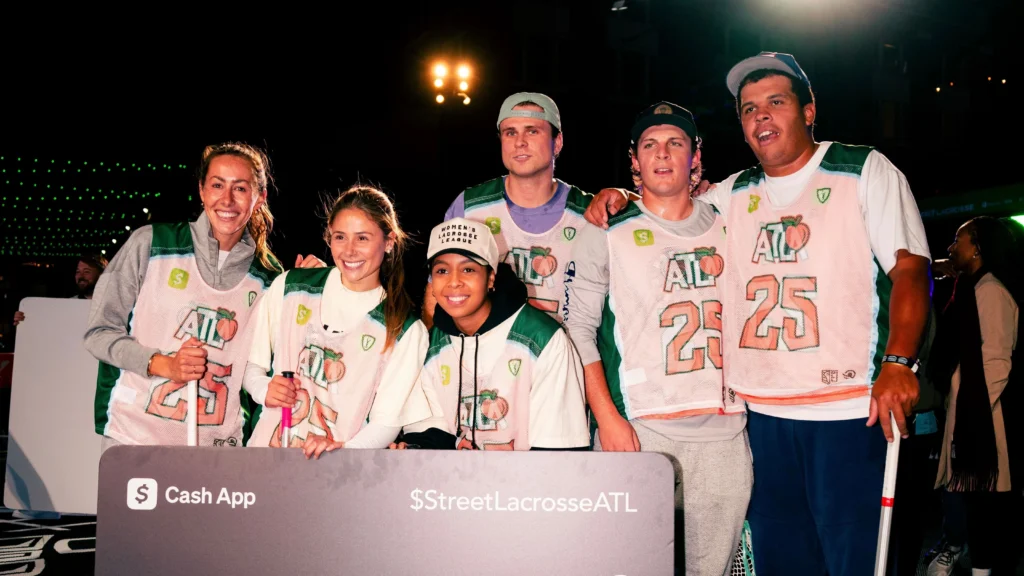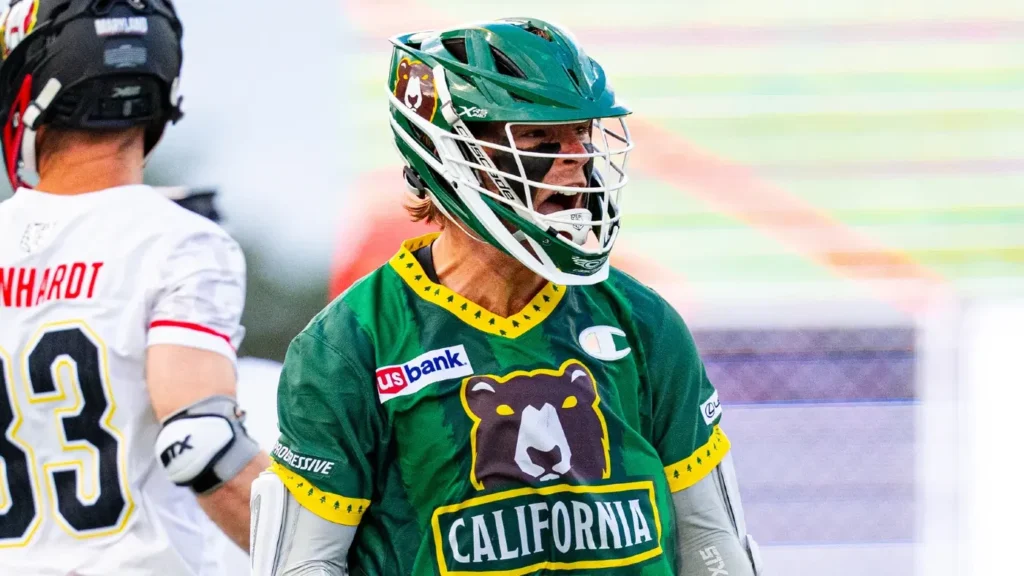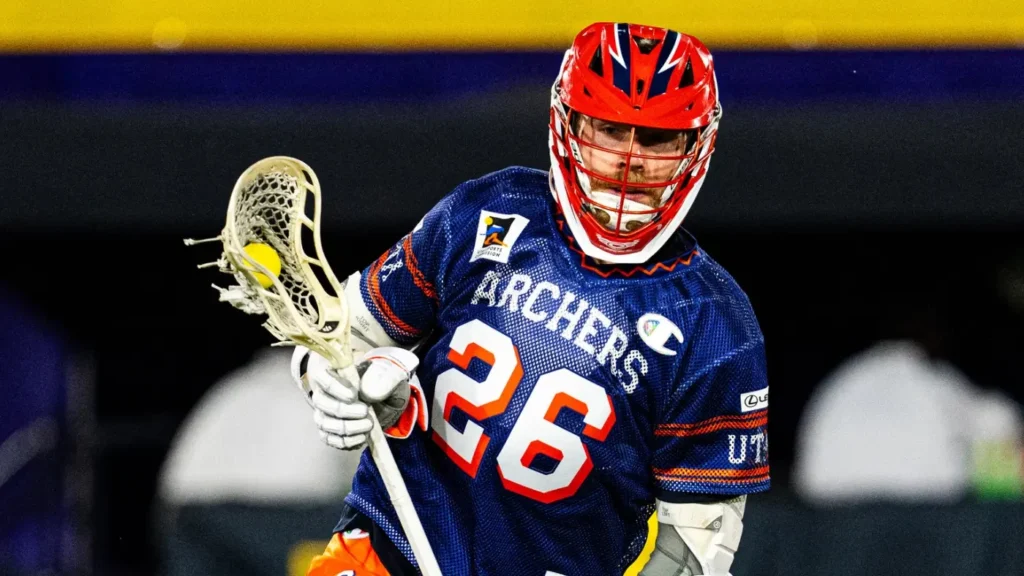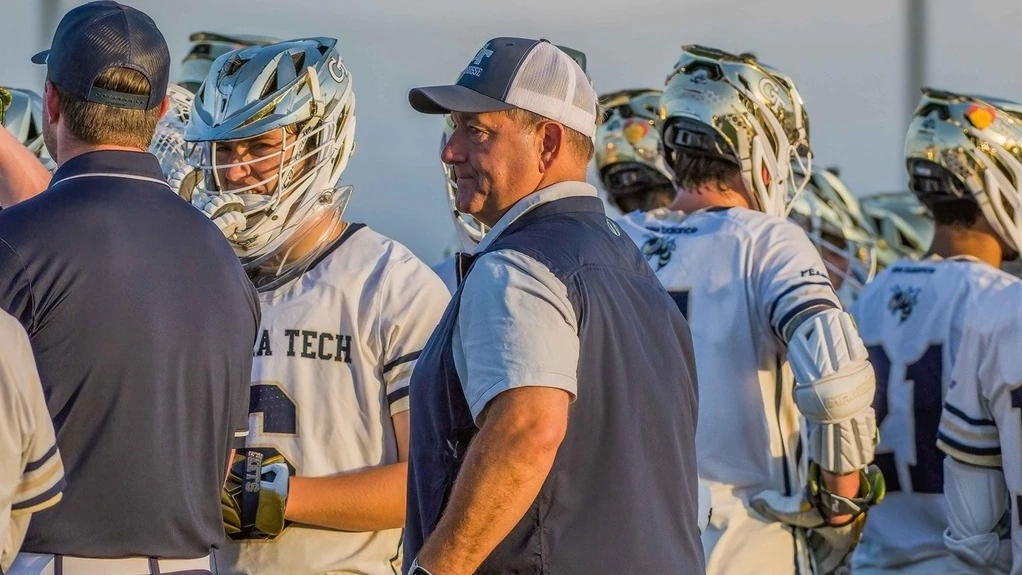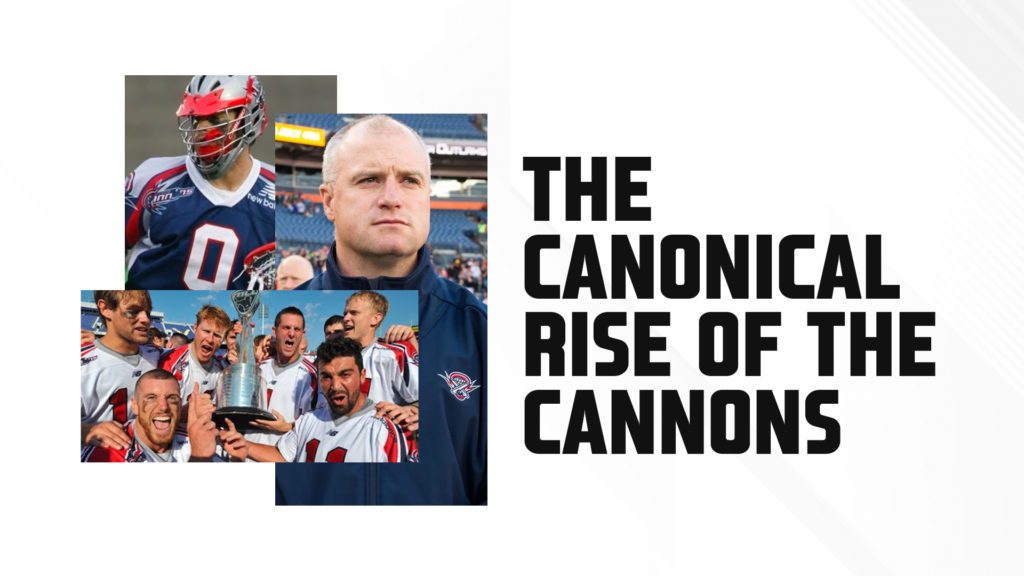
The Canonical Rise of the Cannons
By Kyle Devitte | Mar 10, 2021
For those of you that haven’t lived in the New England area for the last 20 years, you will probably never know what it’s like to see an entire region go from downtrodden misery factories to exuberant celebratory superfans in every major sport. You see, people think that winning is what unites sports fans - it’s not. Winning is what creates new fans; losing is what unites and hardens them. Starting in the early aughts, if you wanted to be relevant in the greater Boston area then you had to lift trophies over your head. Anything else wouldn’t be enough to get you two inches of column space in the Globe or the Herald, much less a sponsorship from Dunks, kehd.
And yet, the Boston Cannons did just that; both times in miraculous and somewhat unrelated fashion in 2011 and 2020. Yes, fans, the latest addition to the PLL family has a history of triumph, failure, and historical significance.
The first few seasons of the Boston Cannons weren’t even played in Boston, they were played in Lowell, which is sort of like saying you’re from Boston but you’re really from Maine and there is no excuse for your accent. The early Cannons teams didn’t really have a true superstar player that defined their era until Connor Gill, and brief tenures from Kevin Leveille and Mark Millon. Boston was a blue-collar team that was just as comfortable wiping blood off their jersey as they were scoring goals. Players like Mike Regan, Dave Evans, and Mike Battista loved to shoot from anywhere and everywhere. But the team was, unfortunately, in the middle of the standings for most of their early years. The team’s best performance was in 2004 when they fell to the Philadelphia Barrage 13-11 in the 2004 MLL Championship Game on their home field, which at that point was Boston University’s Nickerson Stadium.
Heading into the 2008 Major League Lacrosse season, the franchise was struggling for relevance despite trading for the most electrifying player of a generation in Mikey Powell the previous year. Former Cannons goaltender Bill Daye was charged with leading Boston into the maelstrom of expectations created by a deep roster of top-tier talent that included employee number zero, electrically eclectic Johnny Christmas, high-scoring Matt Poskay, and crowd favorite QB1 Sean Morris. The defense was a collection of hardcore hackers like Chris Passavia and Ray Megill in front of “I crouch like this because I play a flat arc” Kip Turner. Still, despite this combination of blistering swashbucklers and seething rage an element was clearly missing.
With the 2008 collegiate draft closing in, Cannons GM Mark Kastrud and head coach Bill Daye held two of the first six picks in the draft. Two chances to make their team better and challenge for the MLL title. But instead of using two picks to improve their defense or get some cover at X, the Cannons went all in on the No. 1 pick and selected Paul Rabil. It would be a move that would come to define the franchise’s fortunes, and misfortunes, for years to come.
People forget that Rabil wasn’t considered by everyone in lacrosse to be the best player in the draft - that distinction was being shared with Matt Danowski, who was well on track to break the NCAA points record at Duke. The Chicago Machine actually had the first pick in the draft and the New Jersey Pride had the second pick. The Pride were in desperate need of a midfielder and the Machine were in desperate need of, well, everything, so on paper it made sense that Hopkins’ square-jawed SUV would land in New Jersey. Instead, Rabil would play his first game against the Pride in a Cannons uniform.
“We played in New Jersey at a high school venue,” said Rabil. “There was probably 200 people in the stands. I wore number 33 at the time because they couldn't turn around 99 in time. Tom Zummo was on the team and he wore number nine. I remember hearing NFL and NBA stories about [approaching] a veteran for your number - you ask him about it, offer to take him out to dinner or pay him for it and I did both and he was kind of like ‘Nah, you're good’.”
Despite fielding the league’s newest star player, the Cannons would still have to wait to join the ranks of their local sporting brethren for a few more years. Prospective glory would give way to heartbreak and turmoil those ‘09 and ‘10 seasons.
In 2009, Rabil was named the league MVP, but the team went 6-6 in the regular season. Boston lost to the Denver Outlaws in the semi-finals thanks to an unassisted goal from Kyle Harrison in the fourth quarter. The Outlaws appeared to have destiny on their side, but that notion was scrubbed when they blinked first against the Nationals, losing 10-9.
The 2010 Cannons finished 8-4 and were the No. 1 seed in the playoffs. It looked like the newest member of the Boston fraternity was finally going to get their banner. The front office fully embraced their biggest star - in his third season as a pro, Rabil wasn’t quite the face of lacrosse just yet, but he was the face of the Cannons.
“In 2010, we created an intro video for Paul showing all the great Boston athletes: 4, 9, 12, 33, ...and then 99,” said then Cannons General Manager Kevin Barney. “He won't admit it, but he hated it. [He] was 50% embarrassed, 50% didn't want the added attention. Game two, he looks at me in the intro line-up and asked if we were playing that video again with a not so nice look on his face. A few years later, he led a group of guys asking how they can make their intros more individualized like an MLB player coming up to bat with their music.”
In the first round of the playoffs, the Bayhawks used a six-goal second quarter to bury Boston’s championship hopes in a dark place. But that wasn’t the end - the Cannons were going to find a way. They had to. Luckily for them, 2011 was a magical year where everything didn’t so much fall - but rather snapped - into place.
***
The 2011 championship season began with a promising 15-12 victory against longtime [fake] rival Long Island Lizards on May 14th. However, it was swiftly followed by a one-goal loss to the Cannons’ actual rival at the time, the Denver Outlaws. Boston won all but two face-offs, outshot the Outlaws by a sizable margin, and scooped 20 more groundballs. It was the rarest of occurrences in pro lacrosse - a dominant loss. This game was not the first turn of the screw into the nameplate on the Steinfeld Trophy, but it was a key touchpoint.
The Cannons rattled off five wins in a row to go top of the standings before Long Island and Hamilton would knock them down in back-to-back games after the All-Star break. However, those two losses would be the team’s last for the rest of the season.
If you go up and down the 2011 Cannons roster you will notice a dearth of names that still resonate today. Sure, there is Paul Rabil, Ryan Boyle and maybe even Matt Poskay or Chris Eck if you’re up on your MLL history. But who else stands out as a legendary figure? At the time Kyle Sweeney was one of the best longpoles on the planet. Jordan Burke basically Tom Brady-ed himself into the starting lineup, though he wasn’t able to replicate the GOAT’s longevity.
The players that powered Boston’s title run were a hustle gang the likes of which we haven’t seen in pro lacrosse since the last two Whipsnakes teams. Midfielders Greg Downing, JJ Morrissey, Pat Heim, Matt Smalley and Matt Casey constantly and consistently sold out on every play. Heim and Downing, the former being a No. 1 draft pick and the latter being a lefty jack of all trades, buttressed the offense off ball by sacrificing their own points so that the others may feast. Morrissey, Casey and Smalley were all cut from the same “no one believes in us” cloth that was somehow woven into a luxurious robe by head coach Bill Daye. This team was not built to win like the super teams of the modern era - it was built to punish in transition and wear teams down in the six on six. The Cannons offense knew exactly how to spread a defense and lean on the beams until the weakest strut cracked and failed.
In the 2011 championship game against the Hamilton Nationals, the Cannons built a 6-3 lead by dictating the pace of play early. The Nationals, a heavily Canadian populated high-scoring behemoth, had to lean on their legendary American Casey Powell - perhaps you have heard tale of him - to drag them back into the game in the second half. But Powell’s hat trick could not bring the Nationals their second championship (or third depending on if you view their previous life as the Rattlers) and the Cannons held on to win their first MLL title.
With their requisite championship safely nestled in the trophy cabinet the standard was now cemented. Boston was finally among the MLL’s elite.
Until they weren’t.
The fall was not immediate, but it was drastic. After head coach Bill Daye, the Cannons struggled to replicate their formula of success. They were summarily bounced by the Bayhawks in 2012 and failed to even make the postseason in 2013 and 2014. Years of poor drafts and even poorer trades doomed the Cannons to the doldrums of the standings after Rabil’s departure. In fact, it could be argued that it all started with the article that deigned to pose the question “Is it Time to Trade Paul Rabil”? Which was published in the New England Lacrosse Journal. Spoiler: It wasn’t time, but the Cannons did it anyway and the split was acrimonious to say the least. Rabil would go on to win another title with the Lizards in 2015 and the Cannons fired nothing but empty shells for years.
It’s telling that, of the MLL’s eight (then six) teams, Boston lost the least amount of talent to the PLL. Not so much that everyone stayed, but that the talent that was left was scattered amongst varying positions that opened up new opportunities for understudies to take the stage.
Sergio Perkovic’s departure gave way to Kyle Denhoff, Kyle Jackson, and Challen Rogers developing into better players with more reps. Trevor Baptiste’s move allowed the Cannons to bring in Kevin Reisman who used his skills after the draw to make a big impact for the Cannons during their 2020 run. James Pannell leaving allowed Will Sands take the reins, which paid dividends as Sands was flipped a year later for Bryce Wasserman - who became the MVP of the MLL in 2020.
After all of this player development the 2020 Boston Cannons squad had the look of a contender from the jump, but in a very different way than the 2011 team did. They had all the necessary ingredients for a successful campaign - A top goaltender in Nick Marrocco, a scrappy FOGO in Kevin Reisman, two new star players in Bryan Cole and Randy Staats, and a collection of criminally underrated midfielders that were able to stretch defenses.
Of course, paper doesn’t win championships; players do. The specter of COVID-19 may hang over the end of the MLL’s...well, self. However, that shouldn’t take away from the final game, which was an entertaining affair that saw The Cannons win their second title thanks to a breakout performance from former Tufts attackman John Uppgren coming off the bench to score five goals. Bryce Wasserman was named the MLL’s MVP after leading his team to the championship with his signature drives from X that keyed most of the Cannons’ offense for the majority of the truncated season. The irony of the 2020 title win was that, in the end, it was the current iteration’s grittiness that ended up winning the day.
“Going into the championship game we were down five guys,” said Cannons head coach Sean Quirk. “We went into that game against Denver with 20 players and the guys just battled. We talked the night before and that morning to play each minute, reset and go again. That's what they did. They played one-minute games for 60 minutes and competed at the highest level they had all week in Annapolis. The rest is history.”
What’s next for Cannons LC? They retained their championship coach heading into the PLL, but their personnel will be different, but their spirit will remain the same.
In order to reassemble the spirit of the franchise, a certain type of player will need to be selected in the next three drafts. With each PLL team only able to protect their most integral players in the expansion draft, the core of the new Cannons will be assembled from the remaining PLL players. Far from flotsam and jetsam, the first 18 members of the 2021 Cannons squad will have a new chance. What did the 2011 and 2020 teams have in common? The innards of those champions were composed of the following: Hustle hungry two-way midfielders. A strong goalie core. A battling face-off crew. No nonsense team-first defenders. To rebuild the world engine that was the Cannons, one needs only look to the past – build the spine of the team first, then draft your talisman in the Entry Draft or this year’s jam-packed NCAA Draft. Building a team isn’t easy, but the spirit of the Cannons was more than their crop of superstars – they were loved because they had a bar fighter’s spirit in a city that is constantly underestimated.
The acquisition of Paul Rabil prior to the expansion draft is just as much a link to the past as the team's logo and iconography. Teams from the past are often identified by their most influential players and Rabil was the man that brought Boston a title. He followed in the same footsteps laid out in Boston cobblestone as Kevin Garnett, Tom Brady and Pedro Martinez. That's not an arguable thing - you cannot change the past, nor can you live in it. History, however, is held up as an example of the potential. Going into this draft there is no greater potential than the will to build a great team from the ground up.
Logos and platitudes are totemic and great in their own way, but players are the marrow of giants. And so, this nostalgic monster from Boston will drag its oversized blunderbuss to its new home. The only issue is that its new home is in Jotunheim - where the rest of the giants of the PLL live.
You may not want to hear this, but when you win a championship in New England you become part of the fabric of the entire region. That day you win you become someone’s hero. The Cannons might be in a new league stocked with the world’s best lacrosse players, but they are still the Cannons, and they’re the defending champs until they’re not.

